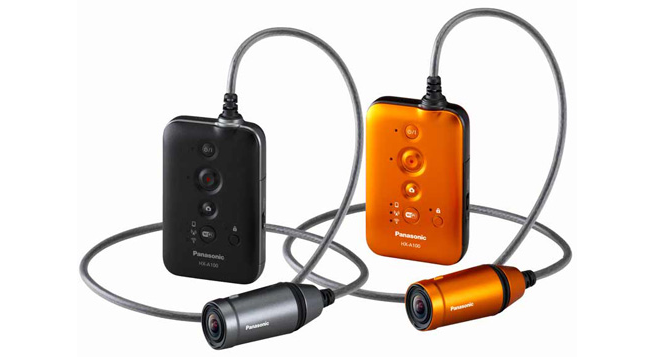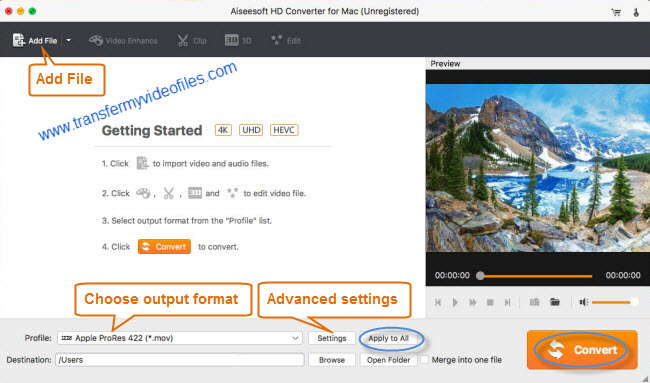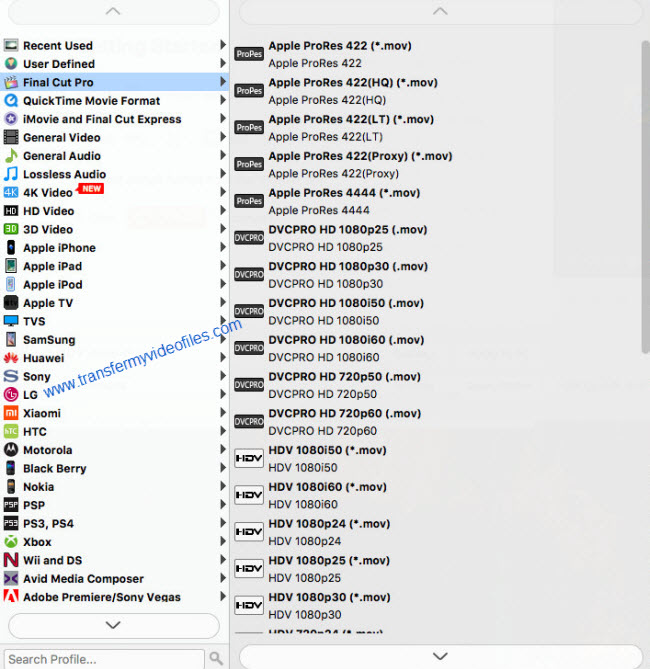We write this tutorial to help those who are having issues editing Panasonic HX-A100 footage in FCP X smoothly. It explains a workaround to transcode Panasonic HX-A100 video to ProRes 422 codec for use in FCP X with optimum performance.

The HX-A100 is a wearable camera developed by Panasonic. It has a couple of key features that set it apart from the pack. It has recording modes at Full HD 1080p in both 60p and 30p. Also, there are three slow-motion recording modes, including 120 fps at 720p and 240 fps at 360p. The slow-motion effect is done in-camera. Also, live-streaming to USTREAM is possible.
For a faster and more fluid Panasonic HX-A100 and FCP X workflow, we would recommend transcoding HX-A100 footage to ProRes first. Apple ProRes is FCP X’s favorite editing codec, which FCP X will recognize and handle well. Read on to learn a quick guide on how to encode Panasonic HX-A100 video files to ProRes 422 for FCP X editing.
Here’s what you need
HD Video Converter for Mac

How to encode Panasonic HX-A100 video to ProRes for FCP X?
Download, install and run HD Video Converter for Mac, then follow these steps:
Step 1: Run HD Video Converter for Mac as a professional Panasonic HX-A100 video to ProRes Converter. When its main interface comes up, click ‘Add File’ to load source video to it.

Step 2: Select ‘Apple ProRes 422 (*.mov)’ as output format for opening with FCP X
From the ‘Profile’ list, move to ‘Final Cut Pro’ catalogue, and select ‘Apple ProRes 422 (*.mov)’ as target format. Apple ProRes is the best suited editing codec for FCP X and its former version FCP 6 and FCP 7. When loading them into FCP X/6/7, you needn’t wait for a long time for rendering.

Important: If you’ve loaded a number of video clips to do batch conversion, please do remember ticking off ‘Apply to All’ option before you start.
Step 3: Adjust video and audio settings (for advanced users)
If necessary, you can click ‘Settings’ button and go to ‘Profiles Settings’ panel to modify video and audio settings like video encoder, resolution, video bit rate, frame rate, aspect ratio, audio encoder, sample rate, audio bit rate, and audio channels. 3D settings are also available.
Step 4: Click ‘Convert’ to start Panasonic HX-A100 video to ProRes MOV conversion.
Step 5: Click ‘Open Folder’ to get generated ProRes 422 QuickTime files for transferring and editing in Final Cut Pro X with optimum performance.
To import the transcoded files into Final Cut Pro X. navigate to File > Import > Media. In the window that comes up select your transcoded ProRes clips. DO NOT check “Create Optimized Media” OR “Create Proxy Media”. Both of these check boxes are unnecessary because we already converted the media to ProRes which means Final Cut Pro X can use the footage without “optimizing” it. Checking this box would create a redundant and time consuming second transcode of your footage.
You’re now ready to edit!
Related posts
How to edit Panasonic HX-A500 4K video files in iMovie?
Panasonic HX-A100 in iMovie-import HX-A100 video to iMovie
FCP 7 not recognizing my MXF file – convert MXF to ProRes
Convert P2 MXF to ProRes for FCP 6/7/X without losing sound
